Our Blog - Southern Italy - Paestum
We had never heard of the town of Paestum until we started planning this trip, but we are glad we decided to stop here. You won't hear much about "Roman" this or "Roman" that in this blog, but you will hear a lot of "Greek". That is because Paestum was a major ancient Greek city and what is left includes three ancient Greek temples in the Doric order, dating from about 600 to 450 BC, which are in great shape for as old as they are. The city walls and amphitheater are largely intact, and the bottom of the walls of many other structures remain, as well as paved roads. It was founded by the Greeks around the 7th century BC with the name of Poseidonia (for the god Poseidon) although it was later occupied by Lucanians until 273 BC, and then the Romans came in.
One of the reasons that things are in such great shape are that the city was abandoned in the Early Middle Ages, and left undisturbed and largely forgotten until the 18th century. This came after the discovery of Pompeii and Herculaneum and during the construction of a new coastal road from Naples heading south. I have a picture of an etching from 1778 which shows the temples still standing at that time, which I find fascinating.
During WW II, Paestum was the location of the landing beaches of the US 36th Infantry Division during the Allied invasion of Italy. The Allied forces set up their Red Cross first aid tents in, and around, the temples since the Temples were "off limits" to bombing by both sides (there are pictures of soldiers with desks literally in the middle of the Temple of Hera.
The city is surrounded by almost 3 miles of defensive walls that are between 15 and 20 feet thick. The wall is still there although not as tall as it originally was. There are 24 towers (some square, some round) around it although there most like were more but some were destroyed when they built a highway next to the site during the 18th century that cut the site in two.

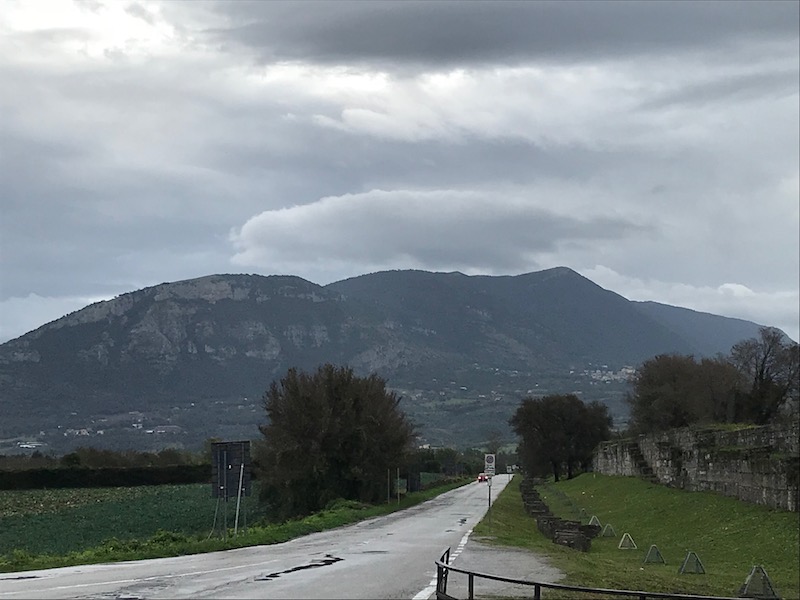
This is the 2nd time this year that we've gone on a vacation where they are shooting a film. This time, the movie "Last Words" by Jonathan Nossiter (guy in the yellow-ish shirt) is being filmed inside the archeological area. You may wonder what kind of film they would shoot inside a set of Greek ruins ... it is set in 2085 and the Earth is almost dead. No more electricity or machines, the planet is a vast desert, crops no longer grow, children have not been born for the last ten years. A call goes out for all survivors to meet in Athens (hence, they were looking for Greek ruins). Nick Nolte is in the film, so we'll have to see if we can watch it on NetFlix once it comes out. It was raining so I'm not sure how much they filmed (and we didn't see Nick anywhere), but the director was there and we saw various props in and around a section of the ruins.
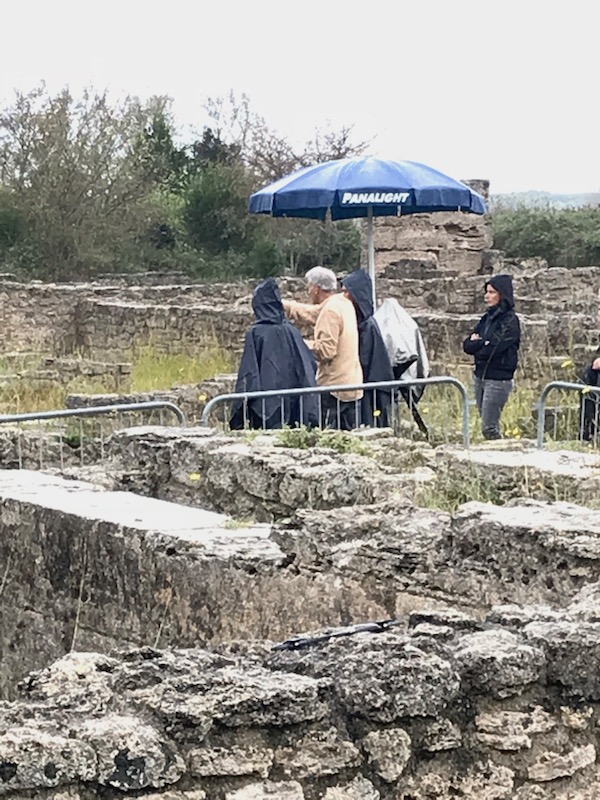


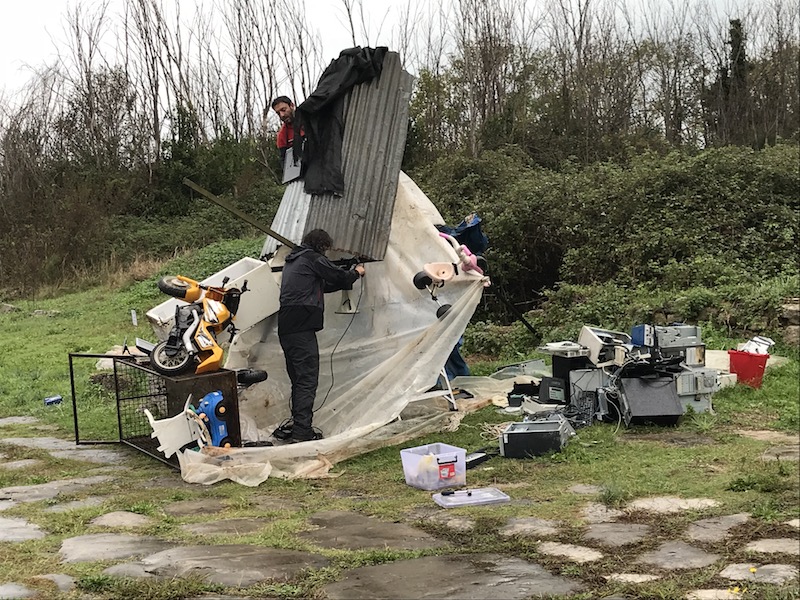
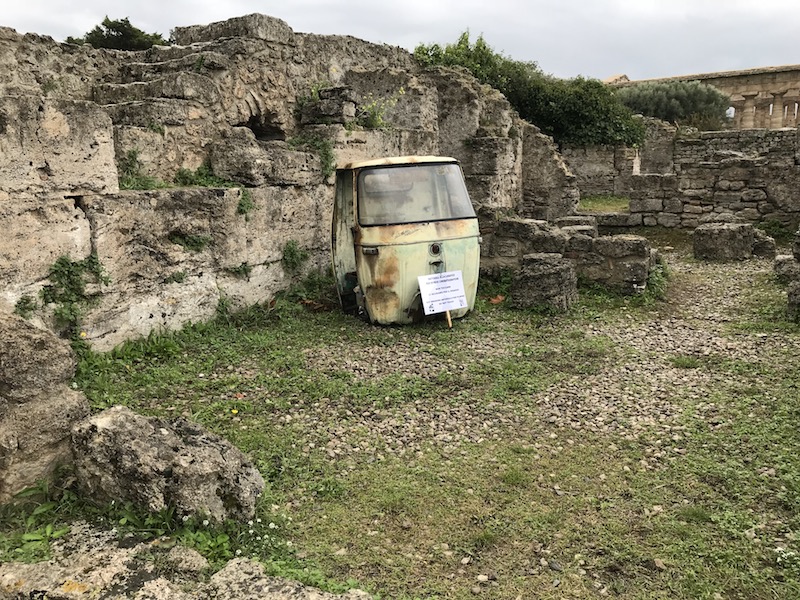
Now for the site ... There are still several roads, like this one that goes to the gate that you can somewhat see at the end of the road. The 2nd picture goes the other direction, and you can just make out some columns of a temple on the right side behind the trees. The road separated the temples on the right from a large residential area to the left.
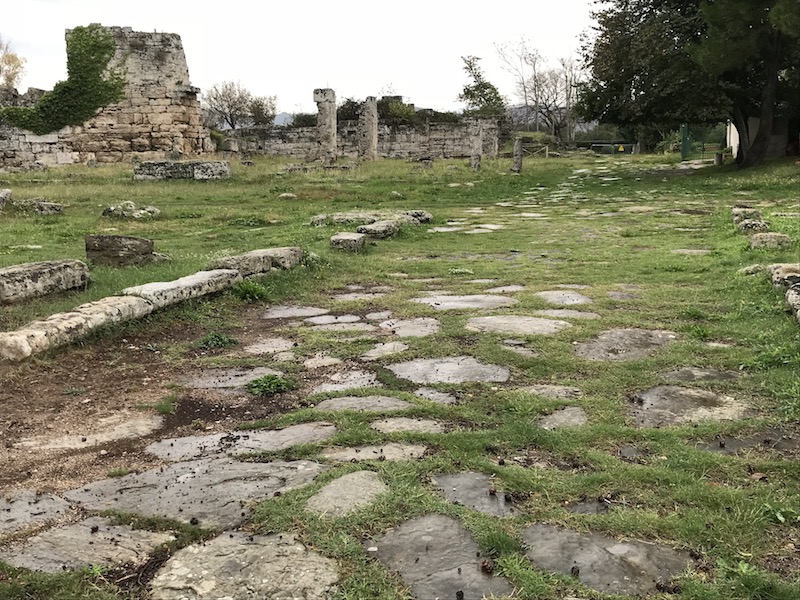

There are lots of buildings that you only see the outline of them from the first couple rows of stone as well as other things that are almost fully intact. We start on the south side, in what is called the Southern Sanctuary. Here is a drawing of what it would have looked like. You can see the two large temples along with the wall with one of the gates to the left, and then all of the little buildings on the top of the drawing is a residential area.

The first temple is the Temple of Hera, although in the 18th century the scholars named it the Basilica. Hera was the wife of Zeus and was the main deity for the town. It has 9 columns on the front and 18 along the sides, and there is also a row of columns down the middle to separate it into two different sections. I took a picture with Tom standing right next to one of the columns to give you an idea of the scale of these columns and the temple. You can also still see some of the large stones that made up the floor of the temple.




The Temple of Neptune is the most majestic and best preserved of the 3 temples here. There are some recent scholars who believe that this temple is actually a temple to Apollo instead of Poseidon/Neptune. The outside set of columns has 6 on each end and 14 down the sides. On the interior, there are 3 rooms and 2 more rows of columns. I got a close-up of the top to show you the decorative elements ... under the "eaves" you can see a couple different decorative items and then the tops of the massive Doric columns.


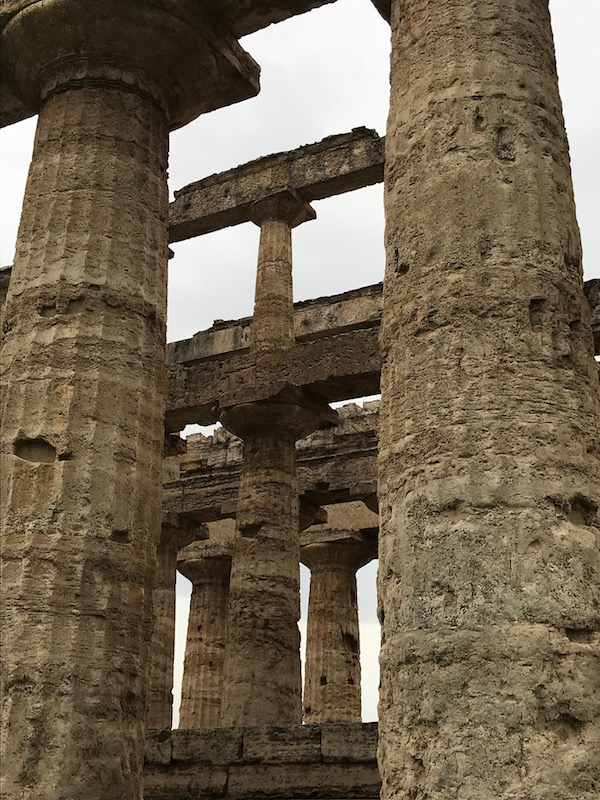



And here are just random pictures of the residential section, where there were lots and lots of houses.

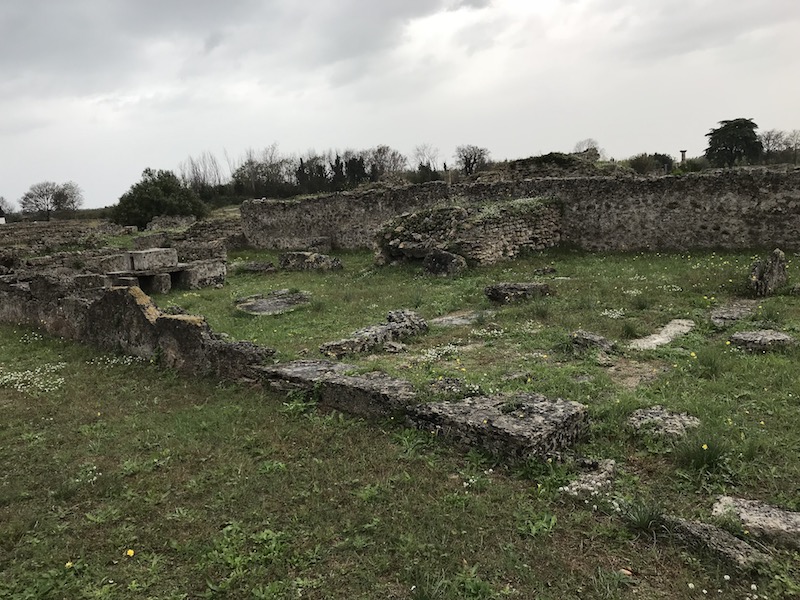



And the two temples in the background from the residential area.
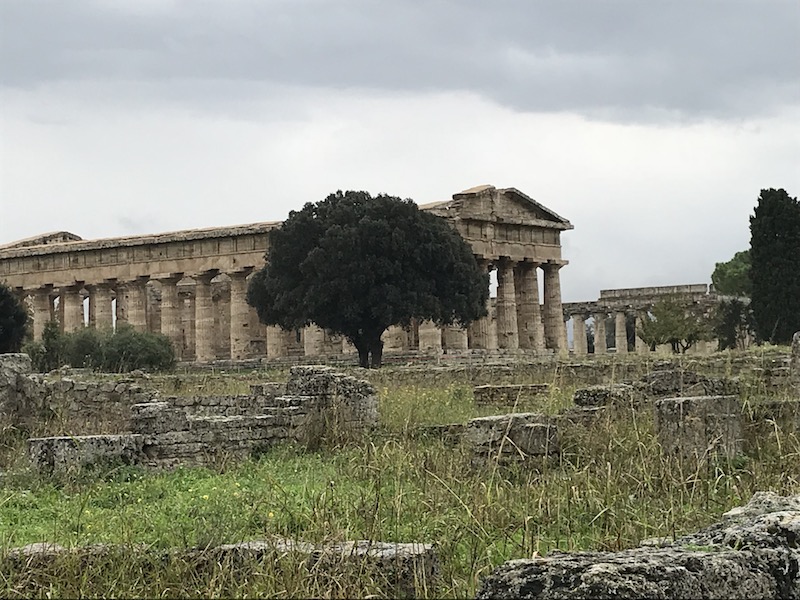
Tom on the road leading to the forum

This was within the residential section, and looks like it would have been in the middle of a courtyard in the home of someone with a high status. We also quite a few of these in Herculaneum as well.
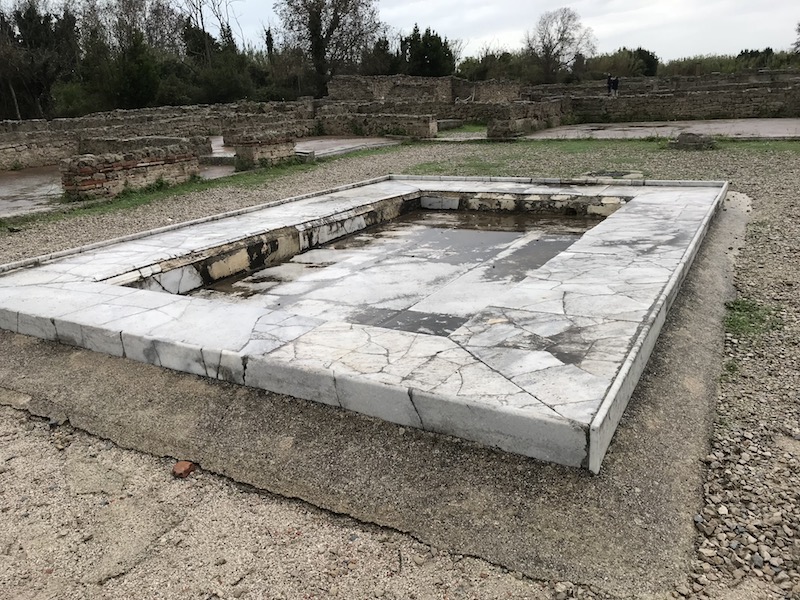
The Romans arrived a few centuries later and enlarged the city, constructing the thermal baths, a forum across from the baths, and an amphitheater, among other things. The thermal baths date back to the 3rd century, which was determined by an inscription discovered at the entrance. After a fire that destroyed part of the structure, the thermal baths were restored by the son of the person who had funded the original construction.

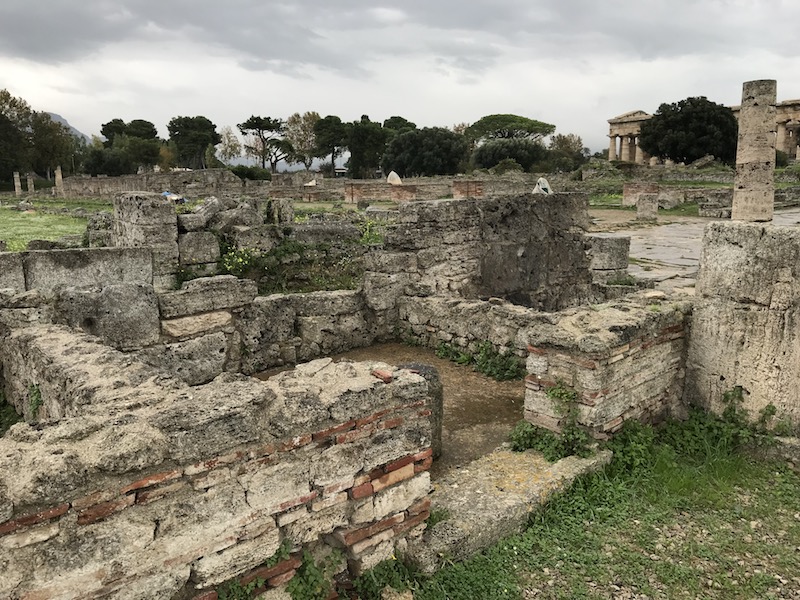
In the 1st century AD (part of what is called the Imperial Age), a Basilica was built next to where the thermal baths would eventually be added. Despite the name, it was not a religious building but an important building used for judicial functions. It was an uncovered rectangular hall, surrounded on three sides by covered corridors. At the center there is a semicircular stone bench and on the walls of the short sides there were niches for the statues. The columns around the outside and the semi-circle are clearly visible.
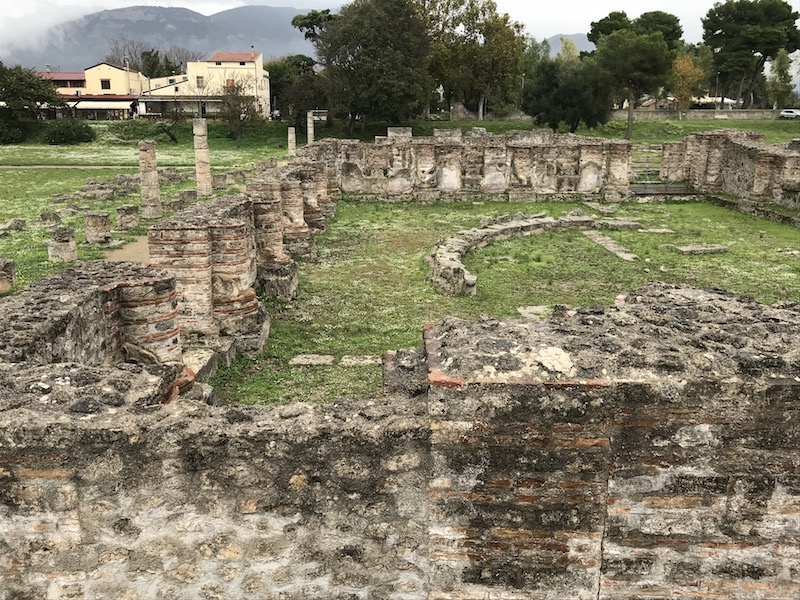


Here you can see a bit of the color that would have been on the inside of the building. There would have been a semi-thick layer of something like plaster that would have given a smooth wall that then would be painted.
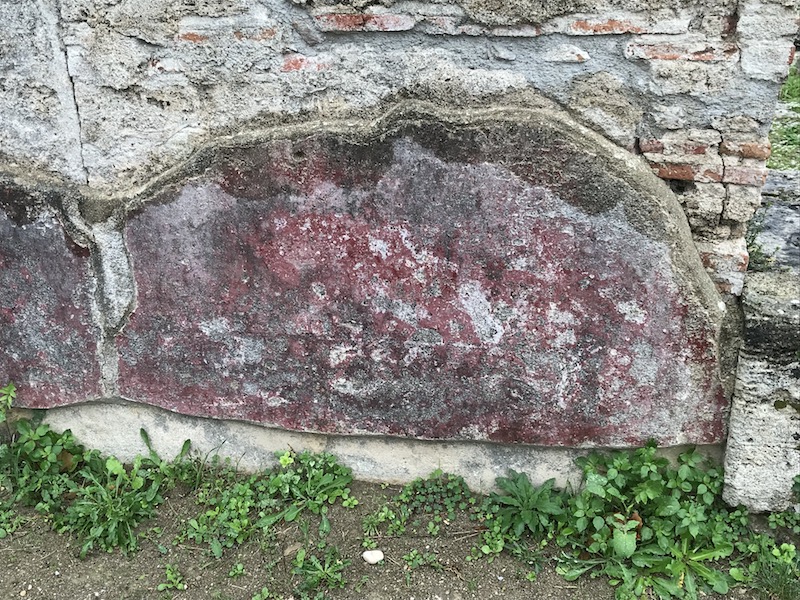
I think this is a great drawing to try to show the forum, which was a very import place in a Roman city, being the political, religious, and social center of the city. Built around 273 BC on the site of the former Greek Agora, you can see the large area in the middle that was the open (grassy) forum. The Basilica would be on the right side in the middle (you can see a circle there). Then on the left, you will see the round thing that looks like an arena (the Comitium), a set of buildings on each side that would have been artisan workshops, commercial stores and restaurants, and then a swimming pool (upper-right corner).

Here you can start seeing the grassy area with remnants of columns (the stuff that looks like tents are for the movie).
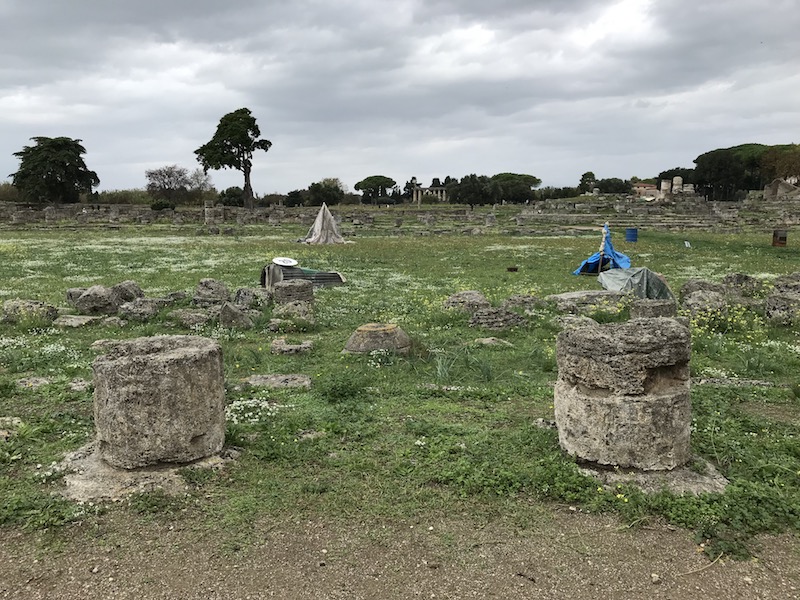

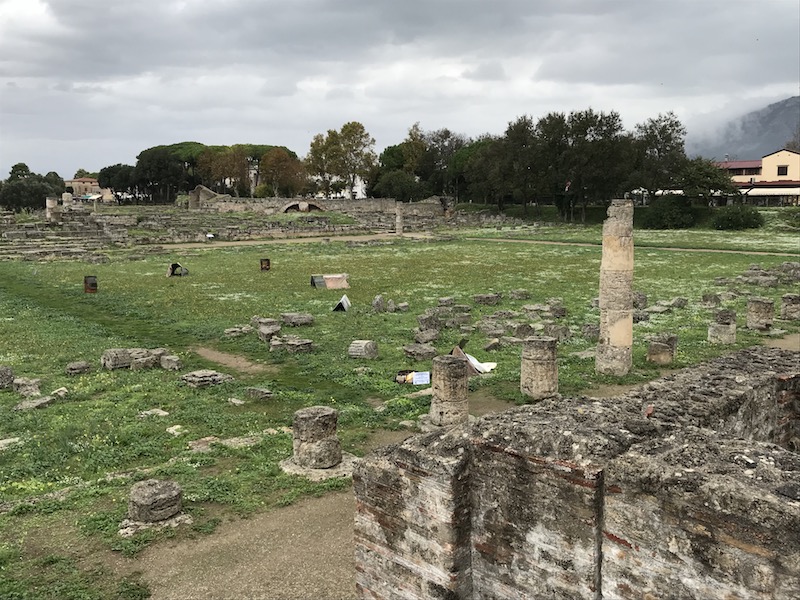
The Comitium (which looks like a round arena) would be where the assemblies (called Comitiae) of the Roman courts would gather to elect magistrates and hold popular assemblies.


The function of the Comitium didn't last long and part of it was chopped off to build the Temple of the Mens Bona (Temple of Peace) in the 2nd century BC. Here you can see the steps going up to the temple and a few of the column bases.


The public pool was near the forum and you can still clearly see the outline. This also didn't last too long, as it was filled in during the Imperial age and another temple built there. You can see the foundation of the temple that was laid in the bottom of the pool.


The Amphitheater is one of the oldest of its kind. You can only see about 1/3 of the actual amphitheater as the rest is buried under the main road through the archeological area. In the 2nd picture, you can follow the cavea (that interior wall that separated the people from whatever was in the arena, like animals) around from the right to the left and you can see how it goes into that hill which is where the road is. The entrance is still really quite nice and you can just make out Tom under there, taking refuge from the rain.



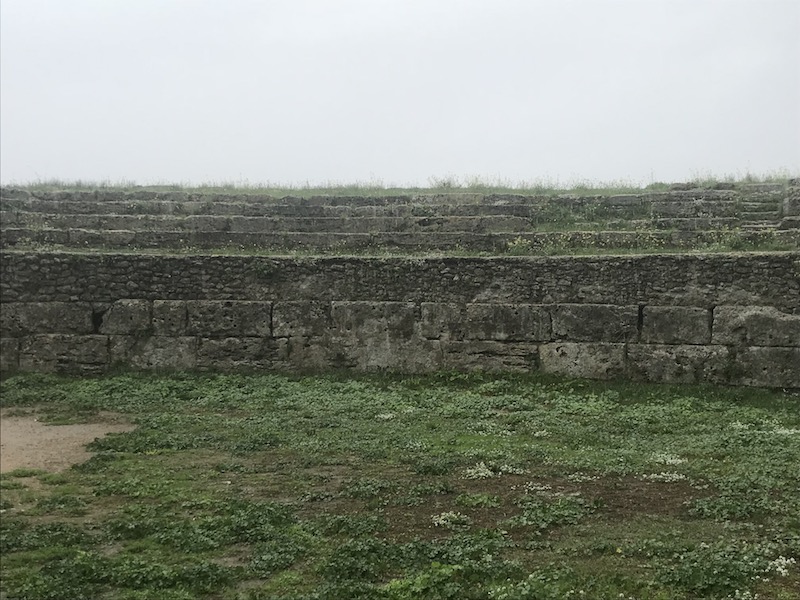

This also looks like an arena but it is not ... it is called the Ekklesiasterion, the meeting building in the heart of the Greek public area, the Agora. Dating back to 480/470 BC, it is circular in shape with concentric steps, built into the rock and originally covered with blocks. It was used for the people's assembly (called the ekklesia) and could host between 1,100 and 1,700 people.


Now that we've seen the southern sanctuary (with the 2 temples) and the center section (with the forum), we now hit the northern sanctuary and the Temple of Athena. Like the others, it has columns around the outside, with 6 columns on the shorter sides and 13 on the longer sides. The columns that are still standing are Doric columns, and there would have been another row of columns, Ionic columns, on the interior. The Ionic column capitals were found but are in the museum. This combination of Doric and Ionic style was also used in another temple nearby that was built about the same time.



In front of the temple are the remains of the altar where religious celebrations took place.

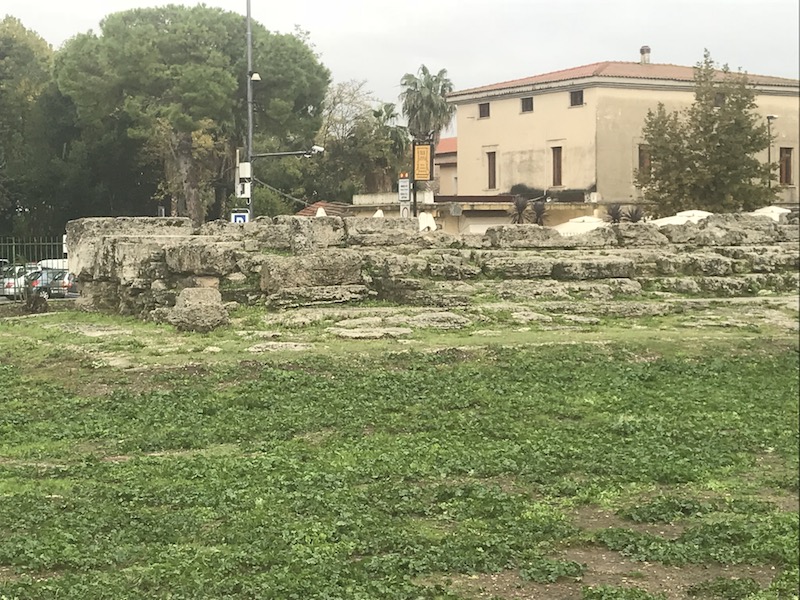
We then headed across the street (the one that was built on top of the amphitheater) and went through the museum. There were quite a few interesting things there!
A few kilometers North of Paestum, near the mouth of the Sele River, there was another sanctuary dedicated to Hera which had another Temple. The temple was destroyed but about 70 of the 6th-century BC Archaic metope relief panels on the temple and another building at the site were found, as well as a pilaster top that was decorated with rosettes and lotus flowers. Some of them show scenes from the life of Hercules and the last picture shows Apollo and Artemis shooting arrows against the giant Tityos who raped their mother, Leto.

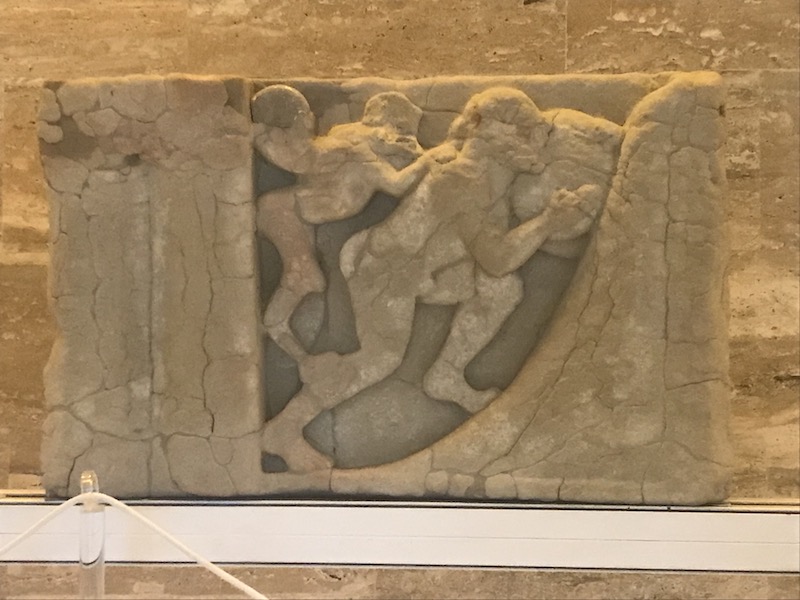
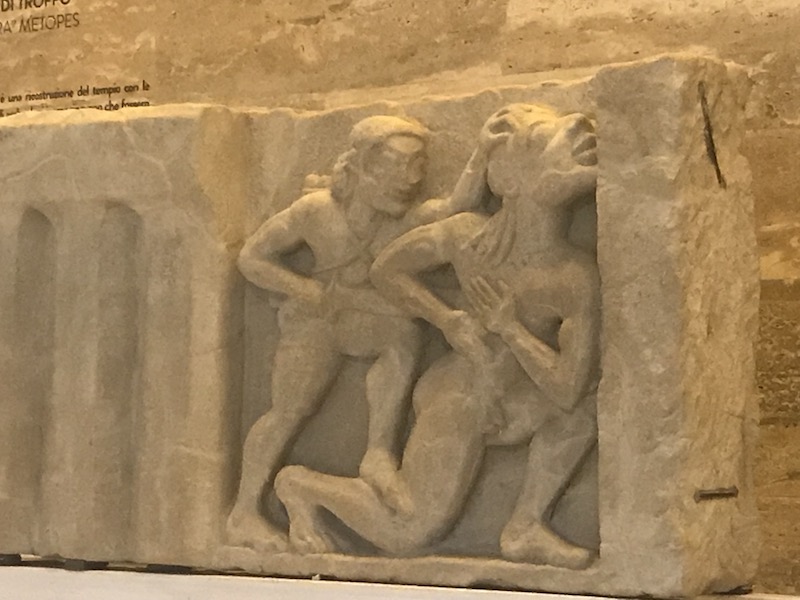

This is another interesting one .... In 1777, Giovanni Battista Piranesi and his son visited Paestum and made models of the temples and some painted tombs (that we will see later). While there, he also painted a series of landscapes that were published in 1778 by his son, so here is what the temples would have looked like in 1777.

In the museum, they had quite a few pieces of pottery from various different timeframes, some having been found within the residential area or temples, and others in some tombs. These first come from a tomb dating back to 570 BC.

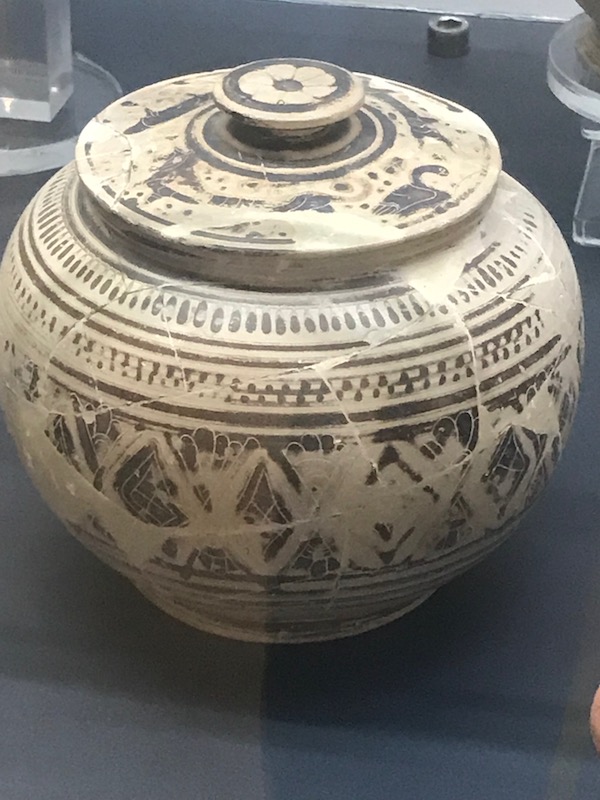
Even older, there was also a set from the late 6th century BC, which is in a very distinctive design that is black with white and red designs, normally showing events. In this example, Hercules is shown entering Olympus, accompanied by Athena, Hermes, Apollo, and Artemis.
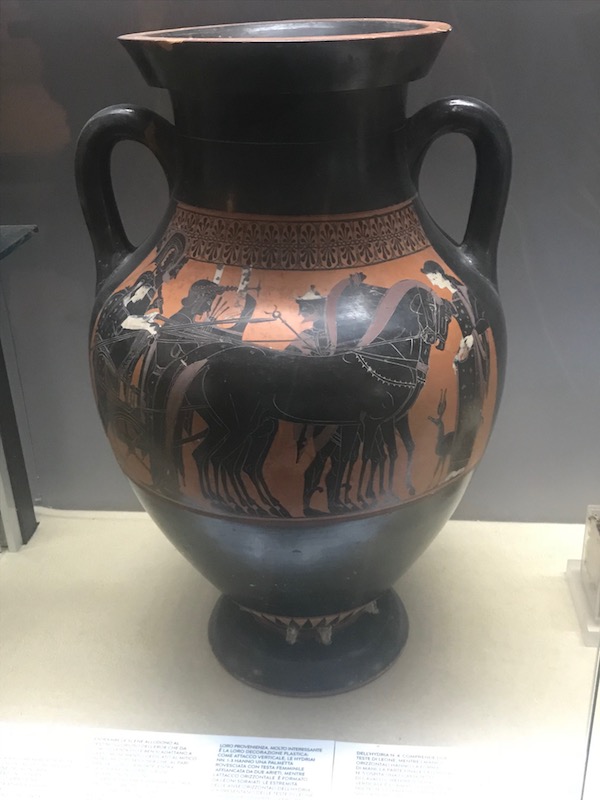

This was found within another tomb and dates back to 340-330 BC. It is another of the "red-figure" pottery that was produced locally in Paestum and portrays the birth of Aphrodite.


Then in one large area, they had a set of painted tombs. Paestum is renowned for its painted tombs, most belonging to the period of Lucanian rule with one of them dating to the Greek period. These were a small group of tombs, dating from late 6th to early 5th century BC that were "different" from the tombs that had previously been found. They were separated from the other tombs and seemed to be small rooms with painted walls and then covered with another slab. Researchers say that this type of decorative tomb reflects the presence of specific rituals and beliefs in the afterlife.
Here you can see the shape of a side wall of one of these small tomb-buildings, this one showing a knight standing next to his horse.


Here, you see a deer hunt.
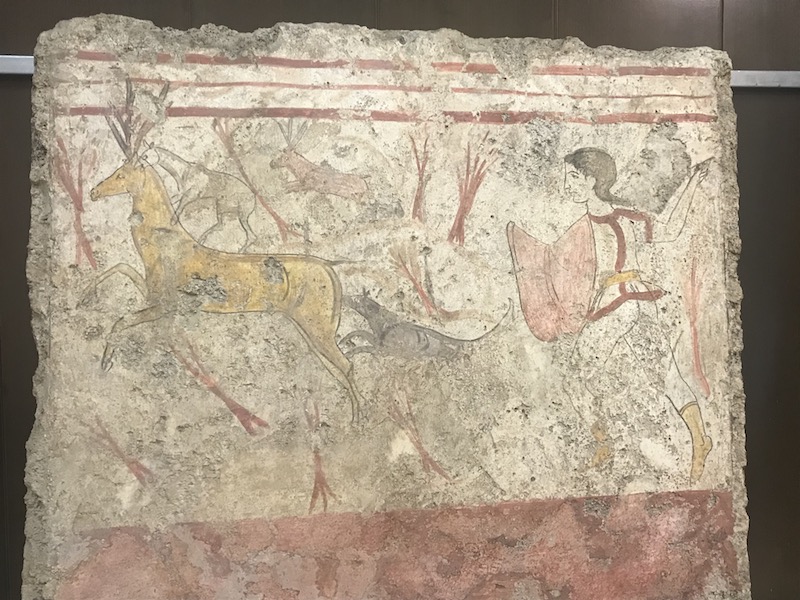
This one, they have 3 of the walls up. The right wall that you see in the first picture shows the return of the warrior after battle. The back wall, that I have a closeup of in picture #2, shows a winged Victory driving a 2-horse chariot in a race. The 3rd picture shows the wall that you can't see on the first picture, and it shows a bearded man (holding a whip) in front of a cart being pulled by mules.


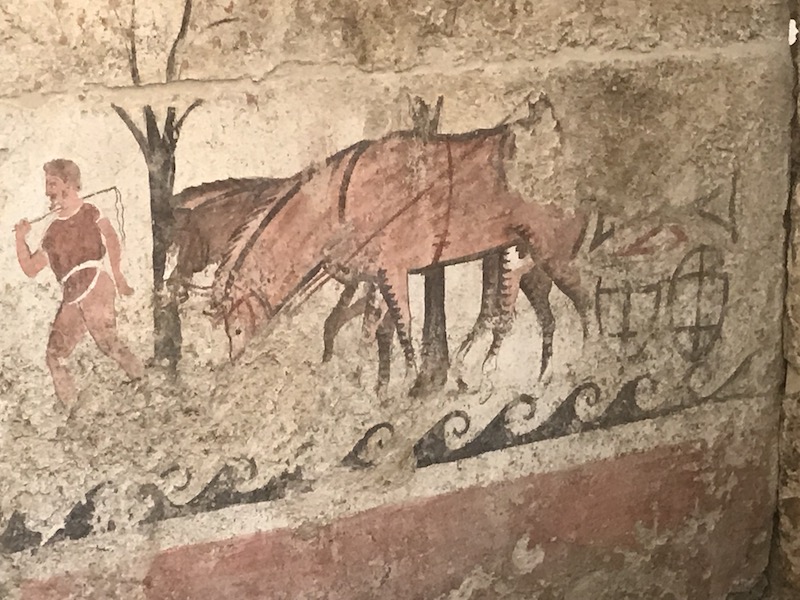
And after a week of pasta ... we opted for steak tonight. This restaurant was literally a 2-minute walk from our B&B and the reviews were amazing. I must say, I have to concur. The area is known for buffalo mozzarella, and so we had to start with it. I usually think that mozzarella doesn't have all that much flavor, but this was flavorful and very fresh, especially with a drizzle of olive oil and a drop or so of balsamic. We also did a local red wine to pair with our steak. We didn't get a picture of the steak itself (I forgot), but grabbed a picture of the slabs of meat aging in cabinets near the door. You could order the meat by the kilo and it came to the table on a sizzling platter.



